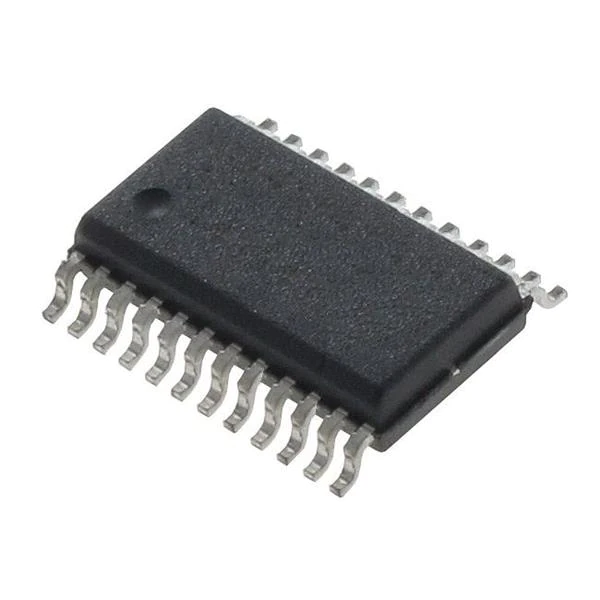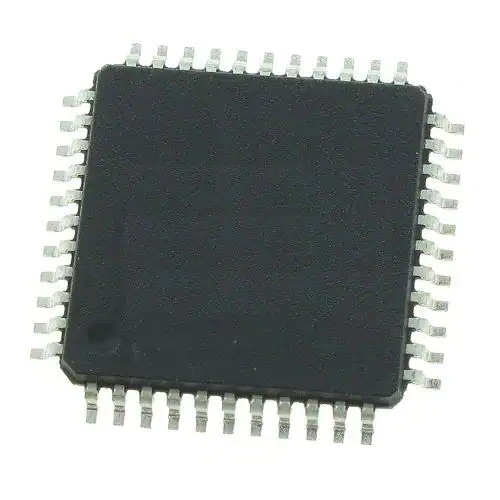We use cookies to enhance your experience. By continuing to browse this site you agree to our use of cookies. More info.
In the pursuit of next-generation electronic devices, it is not silicon semiconductors leading the way, but III-V semiconductors that are at the forefront of this endeavor. These remarkable compounds, comprising elements from groups III and V of the periodic table, boast unique properties that distinguish them from traditional silicon-based semiconductors. This article explores the composition, diverse applications, recent research, and challenges associated with III-V semiconductors, illuminating their pivotal role in the future of electronics. Rf Semiconductor

Image Credit: IM Imagery/Shutterstock.com
For several decades, silicon has dominated the semiconductor industry. Its abundance on Earth, being the second most common element, has made the use of silicon in semiconductors cost-effective. Coupled with silicon’s excellent semiconductor properties, its rule over the industry has been unmatched. Thus, overthrowing silicon from its throne proves to be a difficult task, though not impossible.
III-V semiconductors are created through the combination of elements from group III (like Gallium, Aluminum, and Indium) and group V (including Phosphorus, Arsenic, and Nitrogen) of the periodic table, which results in the generation of a crystal lattice structure with exceptional electronic characteristics. Unlike silicon, III-V semiconductors offer direct bandgap properties, thus providing highly efficient conversion of energy from photons to electrons. This unique attribute makes III-V semiconductors particularly well-suited for optoelectronic applications.
The properties of III-V semiconductors have facilitated the development of cutting-edge applications across diverse industries, thus playing a vital role in the creation of high-frequency and high-speed electronic devices, such as transistors and integrated circuits, thereby contributing to the development of faster, energy-efficient electronic systems. Additionally, III-V semiconductors serve as the cornerstone of optoelectronic devices like lasers, photodetectors, and light-emitting diodes (LEDs), hence promoting advancements in telecommunications, data communication, and solid-state lighting.
Moreover, III-V semiconductors are pivotal in the field of photovoltaics, empowering the creation of high-efficiency solar cells that effectively convert sunlight into electricity. The bandgap characteristic of III-V semiconductors is conducive for efficient photon absorption, thus making III-V semiconductors an ideal choice for harnessing solar energy and also a vital ally in our quest for a future powered by sustainable energy.
In recent times, researchers have devoted substantial efforts in increasing the performance and broadening the application possibilities of III-V semiconductors. Significant strides have been made in developing novel III-V semiconductor materials with improved efficiency and reduced production costs. Additionally, advancements in epitaxial growth techniques have facilitated the integration of III-V semiconductor materials with silicon substrates, paving the way for hybrid integrated circuits that combine the strengths of both III-V compounds and silicon.
III-V nanowires and quantum dots have also gained prominence in the pursuit of next-generation electronic and optoelectronic devices, whereby these nanoscale structures demonstrate quantum confinement effects, offering opportunities to tailor the properties of III-V semiconductors for specific applications.
More recently in 2022, at the University of Michigan, a team of researchers reported breakthroughs in ferroelectric III-V semiconductors. The team, led by Professor Zetian Mi, through ingenious methods successfully imbued the III-nitride material with a special property called "ferroelectricity", which enables precise control and manipulation of specific material properties, unlocking new potentials for ultra-efficient memory, powerful electronic devices, and even revolutionary quantum technology applications.
The researchers also achieved a breakthrough in augmenting the material's performance in high-frequency and high-power devices, which consequently paves the way for the creation of faster, more potent electronic devices, particularly relevant for the rapidly evolving 5G and 6G communication technologies. Furthermore, by strategically introducing the element "Gallium" into the material composition, the team significantly improved its overall quality, rendering it even more adaptable for a diverse range of electronic and optoelectronic devices.
Despite its immense potential, III-V semiconductors do face certain challenges. A primary concern is the cost of production, as the elements used in III-V semiconductors are relatively expensive compared to silicon, which has impeded their widespread adoption in mass-market consumer electronics. As such, for the commercial viability of III-V technology, ensuring both high device yield and cost-effectiveness are of high importance.
Additionally, integrating III-V semiconductor materials with existing silicon-based technology poses challenges due to differences in lattice structures and thermal expansion coefficients. Addressing these compatibility issues remains a significant focus of research and development.
The complexity of processing III-V materials compared to traditional silicon-based manufacturing may also prove challenging, requiring specialized equipment and expertise. This will add to the convoluted process and cost of III-V semiconductor fabrication, hampering the commercial viability of III-V semiconductors.
Furthermore, some III-V semiconductors contain toxic elements, raising concerns about their potential environmental impact during production, use, and disposal. Thus, it is imperative that sustainable practices and waste management strategies be developed to mitigate these concerns.
As technology continues to advance, III-V semiconductors are poised to revolutionize the landscape of electronics. Their exceptional properties and versatile applications render them indispensable in the development of high-speed, energy-efficient electronic devices and advanced optoelectronic systems. Notwithstanding challenges, ongoing research and progress are steadily overcoming obstacles, heralding a future where III-V semiconductors shape the evolution of electronics.
More from AZoM: What is the Role of the Depletion Region in a Semiconductor PN Junction?
Vyas K, Espinosa DHG, Hutama D, Jain SK, Mahjoub R, Mobini E, et al. Group III-V semiconductors as promising nonlinear integrated photonic platforms. Advances in Physics: X. 2022 Jul 27;7(1).
Tournet J, Lee Y, Karuturi SK, Tan HH, Jagadish C. III–V Semiconductor Materials for Solar Hydrogen Production: Status and Prospects.ACS Energy Letters.2020 Jan 20;5(2):611–22.
Liu Z, Ma W, Ye X. Shape control in the synthesis of colloidal semiconductor nanocrystals. Anisotropic Particle Assemblies. 2018;37–54.
Demming A, Phys.org. III-V semiconductor photonic integrated circuits go quantum [Internet]. phys.org. [cited 2023 Aug 4]. Available from: https://phys.org/news/2020-10-iii-v-semiconductor-photonic-circuits-quantum.html
Lu F, Wang H, Zeng M, Fu L. Infinite possibilities of ultrathin III-V semiconductors: Starting from synthesis. 2022 Mar 1 [cited 2023 Aug 4];25(3):103835–5. Available from: https://www.ncbi.nlm.nih.gov/pmc/articles/PMC8857587/
Horowitz KA, Remo TW, Smith B, Ptak AJ. A Techno-Economic Analysis and Cost Reduction Roadmap for III-V Solar Cells [Internet]. www.osti.gov. 2018 [cited 2023 Aug 4]. Available from: https://www.osti.gov/biblio/1484349
Fujii T, Hiraki T, Aihara T, Nishi H, Takeda K, Sato T, et al. Development of an Epitaxial Growth Technique Using III-V on a Si Platform for Heterogeneous Integration of Membrane Photonic Devices on Si. Applied Sciences [Internet]. 2021 Jan 1 [cited 2023 Aug 4];11(4):1801. Available from: https://www.mdpi.com/2076-3417/11/4/1801
Cipriano LA, Di Liberto G, Tosoni S, Pacchioni G. Quantum confinement in group III–V semiconductor 2D nanostructures.Nanoscale.2020;12(33):17494–501.
Optical and Photonic Solutions Blog > Heterogeneous Integration of III-V Lasers and Semiconductor Optical Amplifiers on Silicon Photonic ICs [Internet]. blogs.synopsys.com. [cited 2023 Aug 4]. Available from: https://blogs.synopsys.com/optical-solutions/2023/01/23/heterogeneous-integration-of-iii-v-lasers-and-semiconductor-optical-amplifiers-on-silicon-photonic-ics/
Tien Khee Ng, Holguin-Lerma JA, Chun Hong Kang, Islam Ashry, Zhang H, Bucci G, et al.Group-III-nitride and halide-perovskite semiconductor gain media for amplified spontaneous emission and lasing applications.2021 Jan 22;54(:143001–1.
Hopkinson M, Martin T, Smowton P. III–V semiconductor devices integrated with silicon. Semiconductor Science and Technology. 2013 Aug 21;28(9):090301.
Research full speed ahead on manufacturable III-V materials for next-generation electronics [Internet]. Electrical and Computer Engineering. [cited 2023 Aug 4]. Available from: https://ece.engin.umich.edu/stories/research-full-speed-ahead-on-manufacturable-iii-v-materials-for-next-generation-electronics
Jia R. Properties of thin film III-V/IV semiconductor alloys and nanostructures [Internet]. 2017 [cited 2023 Aug 4]. Available from: https://dspace.mit.edu/bitstream/handle/1721.1/113928/1023630297-MIT.pdf?sequence=1
Zeng C, Gonzalez-Alvarez A, Orenstein E, Field JA, Shadman F, Sierra-Alvarez R. Ecotoxicity assessment of ionic As(III), As(V), In(III) and Ga(III) species potentially released from novel III-V semiconductor materials.2017 Jun 1;140:30–6.
Disclaimer: The views expressed here are those of the author expressed in their private capacity and do not necessarily represent the views of AZoM.com Limited T/A AZoNetwork the owner and operator of this website. This disclaimer forms part of the Terms and conditions of use of this website.
Having graduated in Pharmacology BSc (Hons), followed by the completion of a Master of Science in Biomedical and Molecular Sciences, Chi’s interests spans widely across many areas of scientific enquiry within the life sciences and beyond. This has been demonstrated with his successful completion of modules relating to pharmacology, neuroscience, organic chemistry, biomedical science, as well as animal and plant biology, during his academic pursuits.
Please use one of the following formats to cite this article in your essay, paper or report:
Cheng, Chi. (2023, September 05). The Significance of III-V Semiconductors in Future Electronics. AZoM. Retrieved on September 20, 2023 from https://www.azom.com/article.aspx?ArticleID=22991.
Cheng, Chi."The Significance of III-V Semiconductors in Future Electronics".AZoM.20 September 2023.
Cheng, Chi. "The Significance of III-V Semiconductors in Future Electronics". AZoM. https://www.azom.com/article.aspx?ArticleID=22991. (accessed September 20, 2023).
Cheng, Chi. 2023. The Significance of III-V Semiconductors in Future Electronics. AZoM, viewed 20 September 2023, https://www.azom.com/article.aspx?ArticleID=22991.
Do you have a review, update or anything you would like to add to this article?
At the Advanced Materials Show 2023, AZoM sat down with Tom Warwick, Director and one of the two Founders of Blue Scientific, to discuss the rapid growth of the business and its ambitions for the future.
Phil Levesque & Charlie Pryor
In this interview, AZoM speaks to Instron's Phil Levesque and Charles Pryor about the importance of mechanical testing for electric vehicle batteries.
In this interview, Instron's Landon Goldfarb discussed the importance of mechanical testing for medical devices used in diabetes care and treatment.
Discover the XSeeker 8000 by Tinius Olsen - a compact benchtop X-Ray computed tomography (CT) system.
PILATUS4 R detectors for laboratories enable fast data collection, thanks to their large active area and high quantum efficiency.
ModuleSci’s PE-100 is a compact SEM for full-size performance and is ideal for larger sample imagery.
The global semiconductor market has entered an exciting period. Demand for chip technology is both driving the industry as well as hindering it, with current chip shortages predicted to last for some time. Current trends will likely shape the future of the industry, which is set to continue to show
The primary distinction between graphene-based batteries and solid-state batteries lies in the composition of either electrode. Although the cathode is commonly changed, carbon allotropes can also be employed in fabricating anodes.
In recent years, the IoT is rapidly being introduced into almost all sectors, but it has particular importance in the EV industry.
AZoM.com - An AZoNetwork Site

Plc Microcontroller Owned and operated by AZoNetwork, © 2000-2023